Your association’s certification program should be one of your strategic pillars of success, elevating your profession while driving training, membership, and revenue. Certifications are valued measures of competency for both employers and professionals. In fact, 90% of HR professionals say that credentials bring value to the workplace through employee development, credibility, and performance. (The Rise of Credentials in Hiring, SHRM, 2021.)
However, there’s a lot of competition in the certification marketplace. Even if you followed our advice, enlisting subject matter experts to help you create a body of knowledge that’s beyond compare—that’s not enough. You can’t just announce a certification and expect frenzied demand. You need to build awareness and buy-in across a number of stakeholders, and that can take creativity.
What Does a Lack of Awareness Look Like?
Before we get to some practical ideas for increasing awareness and demand, let’s look at the possible issues from a few different standpoints: professionals seeking certification, employers hiring those professionals, and your association’s leadership team.
From the professional’s perspective, they may not even know your certification exists, especially if it’s new. Lack of visibility in member communications and at events further exacerbates this issue. Even when professionals are aware, they might not understand its relevance to their career goals or which certification to pursue first. They need clarity and guidance on how it aligns with their career trajectory.
From the employer’s perspective, companies might not see the value of your certification for their staff or business goals. If HR departments aren’t informed, they won’t allocate training budgets towards it or prioritize it in job listings. This oversight can mean missed opportunities for both individual career growth and organizational advancement.
From your association’s perspective, it could be a priority problem at the leadership level. Is the certification hidden away on your website? Are you discussing it at conferences, recognizing certified individuals, leveraging all communication tools available? Without defining your target audience or establishing an ecosystem of partners and advocates, your certification risks being overshadowed by competing programs.
Whether your certification is new or has been around for decades, these awareness problems are incredibly common. Now let’s look at some solutions to these challenges.
Five Ways to Amplify Awareness and Adoption
- Go back to the basics and reassess the fundamental business model of your certification. Identify your target audience, understand their needs, and determine the best ways to reach them.
- Examine your marketing messaging. Does it convey the certification’s value proposition effectively to each stakeholder group? Engage with current certification holders and candidates; their insights can help tailor your message to better resonate with future prospects.
- Evaluate your demand-generation strategies. Follow the data. What communications channels and activities are generating the most leads and certification applications? Adjust your marketing budget and tactics based on what’s effective, then fine-tune your approach for optimal success.
- Empower certification holders to share their success stories. Personal testimonials carry more weight than marketing benefits statements. Make it easy for individuals and employers to advocate for your certification—whether through referral programs, interviews, or social media features.
- Forge strategic partnerships. Collaborate with educational institutions, such as college continuing education departments that prepare professionals for certification exams, or other associations with overlapping audiences. Instructors and consultants can also serve as credible, unbiased voices to promote your certification.
Let’s see how some of these strategies made a big impact on a real association.
Awareness-Building in Action
Consider the case of one professional association that faced stagnant growth, reaching fewer than 600 examinees annually after a decade in the market. They started by developing a comprehensive exam preparation program, in both self-study and instructor-led formats, to overcome one of the obstacles facing candidates. Next, they implemented a new distribution channel strategy. In addition to selling the program directly to candidates, it created a corporate sales channel and established partnerships with local colleges, universities, and global training partners to offer classes. Doing so allowed the association to reach professionals beyond its membership base to build awareness and adoption in new markets.
The results were remarkable. Within three years, these new channels accounted for 49% of all certification preparation programs sold. The association saw a surge of more than 21,000 new members, and with refined messaging, certification grew by 71%. Today, hundreds of education partners work alongside the association, and 42% of certification candidates come from outside its member base.
Your association has crafted a certification that encapsulates essential knowledge for success in the industry. By refining your marketing strategies, leveraging success stories, and forging strategic partnerships, you can transform your certification into a recognized standard that professionals and employers alike will seek out and value.
If you want to boost the awareness and adoption of your certification program, the team of experts at Holmes Corporation can help. Reach out to us at [email protected] to get started.







